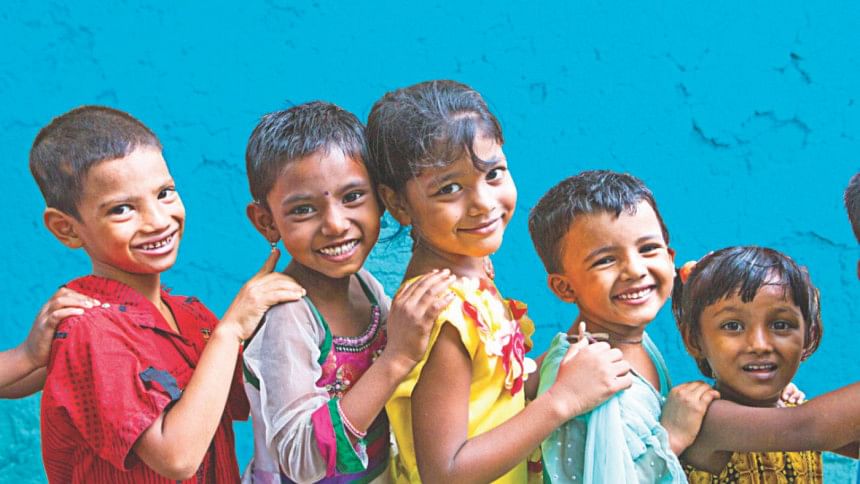Universal Children's Day: How do we keep them in school?

Remarkable progress has been made in recent years to expand access to education in Bangladesh, one of the most densely populated countries of the world. But at the same time, significant challenges remain if the potential is to be fulfilled.
Education is an area that we cannot afford to ignore. As Nelson Mandela said, it is the most powerful weapon we have at our disposal to change the world. For Bangladesh, education is the key to its continued economic growth, the means by which the poor can be lifted out of poverty and the guarantee of its future prosperity.
With more than 30 percent of the population aged under 15 and with about 40 million young people of school age, Bangladesh stands on the cusp of a demographic dividend which will only be realised if reforms to the education system are speedily implemented.
To reap the potential returns of the demographic dividend, the Bangladeshi government should continue investing in education; expenditure on education stood at 11.8 percent in 2015 but is forecast to decline to 10.9 percent by 2019.
In a country where one in four people still live in poverty, the quality of primary education remains a central issue, with unqualified teachers, inadequate infrastructure, poor nutrition and food security all affecting the quality of learning.
Furthermore, there are large variances between urban and rural areas in relation to education provision and across regional and gender lines—some districts have 40 percent fewer primary school completion rates. Children in the poorest households are twice as likely to suffer from education deprivation (27 percent) compared to those from the wealthiest households (13 percent).
Many schools do not have adequate sanitation or menstrual hygiene facilities, while sexual harassment has been blamed as a major reason for female drop-out rates. Early marriages for girls and child labour are still widespread.
Working children, children with disabilities and children in remote areas and areas affected by disasters are often denied their right to education. Children with disabilities make up a disproportionate number of out-of-school children at all levels and are among the most marginalised at all levels of education. Only a fraction of children with even moderate-to-mild disabilities are enrolled in mainstream schools.
The government provides stipends to more than 7.9 million primary school children, including poor and those with disabilities. But progress has been slow in some areas when it comes to teacher recruitment, second-chance education and activity-based teaching.
There is also a chronic challenge of vacancies within the system—about 27 percent of head teachers' posts and 7 percent of assistant teachers' posts remain vacant. Many schools in some parts of the country are overcrowded and some run double shifts. Teacher supervision, monitoring and accountability require strengthening.
In fact, the unresolved problems in primary education have a knock-on effect for secondary education, where enrolment rates are less high.
The highest dropout rate is from Grade 8, which is 20 percent overall, 5 percent for boys and a staggering 37 percent for girls. There is a shortage of quality teachers, while home-to-school distances, the lack of a child-friendly learning environment, costs and protection issues all being deterrents for girls to enter school.
Bangladesh also has the highest proportion of children out of school at lower secondary level (46 percent) in the South Asia region. The number of out-of-school children is particularly high in urban slums and hard-to-reach areas.
Many of these children are particularly vulnerable to violence and abuse, including child marriage, child labour, drug addiction, and violence.
It is estimated that more than seven million children and adolescents in Bangladesh (aged 5-17 years) are denied education because of child labour, especially in Dhaka, where the proportion of working adolescents is more than three times the national average.
The number of out-of-school children does not appear to be decreasing fast enough, despite progress in primary and secondary schooling.
On the positive side, the Bangladeshi government, with support from external development partners over the past three decades, has implemented several large-scale projects and programmes to improve access to primary education as well as the quality of education.
If the country is to improve its report card, it must now capitalise on the progress that has been made.
Edouard Beigbeder is Representative, UNICEF Bangladesh.





Comments